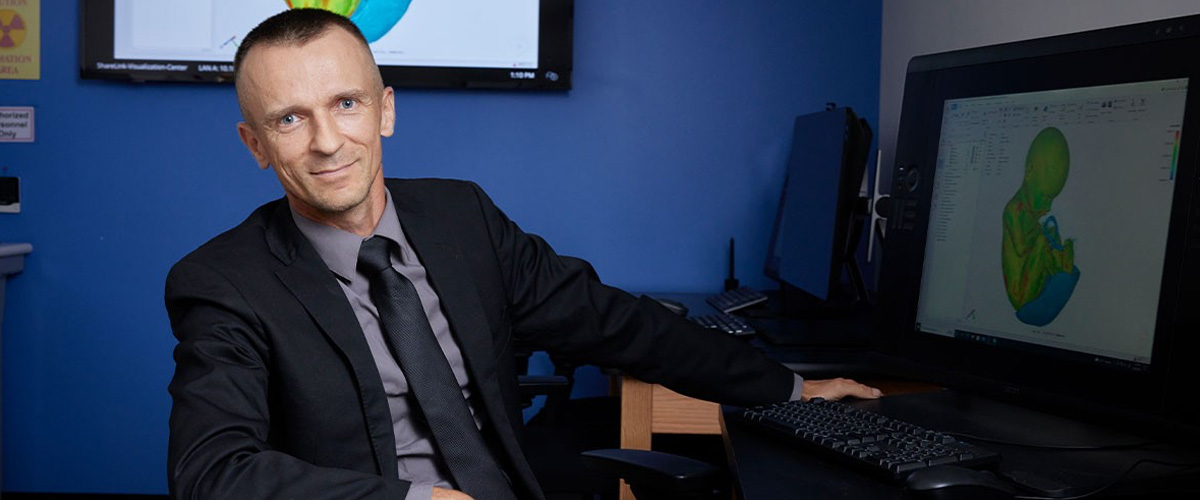
Visualizing How Military Blasts Impact Unborn Babies
Pictured: Assistant Professor Milan Toma
A recent study by College of Osteopathic Medicine (NYITCOM) faculty and alumni provides new insight into how military blasts can injure unborn babies (fetuses) and how the amniotic fluid surrounding the fetus may provide protection. The findings, which were published in the journal Injury, could help doctors better assess fetal injuries and inform the development of future safety devices.
Pregnancy-related trauma is one of the leading causes of morbidity and mortality in pregnant women and their unborn babies. Recently, military conflicts in Eastern Europe and the Middle East, where there have been documented cases of airstrikes targeting maternity hospitals, have led scientists and medical professionals to consider how the forces of a military blast could impact unborn children.
Now, researchers, led by biomedical engineer and NYITCOM Assistant Professor Milan Toma, Ph.D., have used elaborate 3-D models to simulate the impact of an explosion beneath a motor vehicle. The models accounted for real patient-specific geometries and fluid-structure interaction in spaces between the inner lining of the uterus and fetus, placenta, and umbilical cord.
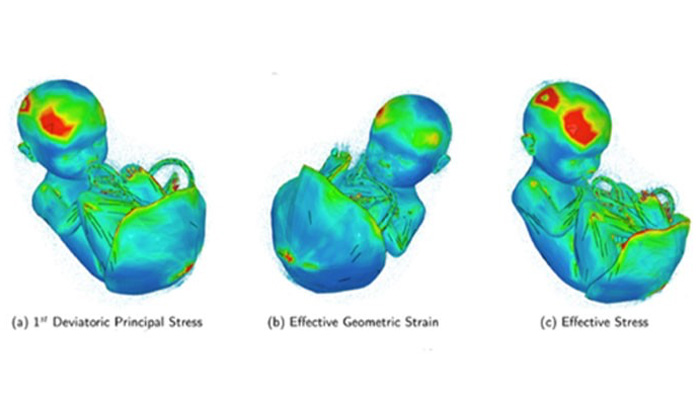
Their findings showed that amniotic fluid is crucial in protecting the fetus from trauma. While the simulated explosion subjected the outside of the uterus to multiple acceleration changes, the fetus (inside the uterus) experienced lesser acceleration changes. The models also showed that because the fetus was positioned with its head facing down and exposed to an explosion underneath the mother’s womb, the area around the skull sustained more stress.
The study was conducted in collaboration with Jonathan Arias (D.O. ’23) and Gregory Kurgansky (D.O. ’23), former NYITCOM students who have since completed their studies and advanced to residency programs. Other collaborators included Ong Chi Wei, Ph.D., from Singapore’s Institute of High Performance Computing, and Rosalyn Chan-Akeley, M.D., an OB-GYN affiliated with Lang Research Center at New York-Presbyterian Hospital Queens.
More Features

This Summer, Don’t Let Dehydration Ruin Your Workout
Sports medicine physician Hallie Zwibel, D.O., shares tips to stay hydrated during summer exercise.

Not Afraid to Get His Hands Dirty
Joseph Ambrosio (B.S. ’94) came to New York Tech because he wanted a hands-on education. Today, he’s paying it forward as a member of the College of Engineering and Computing Sciences Dean’s Executive Advisory Board.
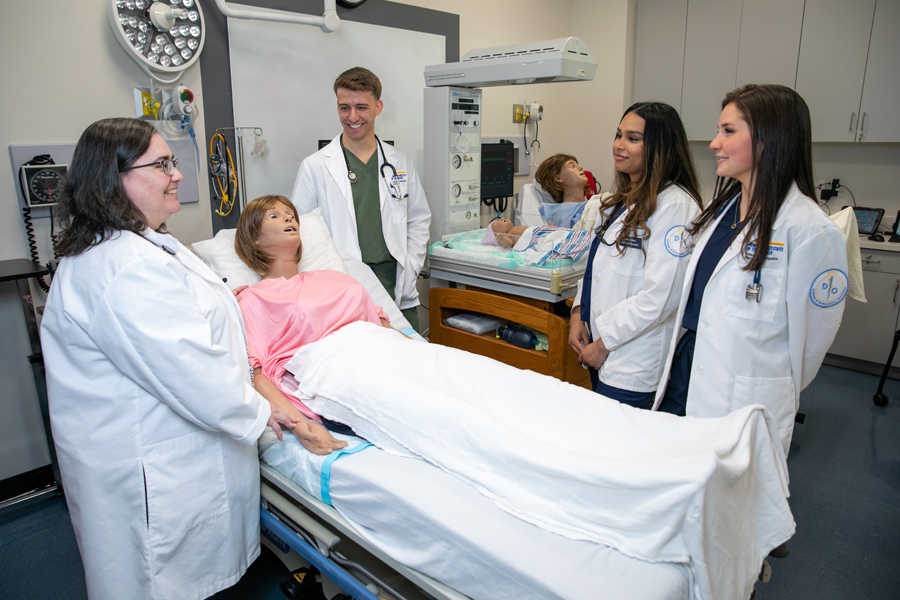
The Ferrara Center for Patient Safety and Clinical Simulation Achieves Full Accreditation in Human Simulation
The center received full accreditation from the Association of Standardized Patient Educators, joining an elite group of institutions dedicated to advancing the science and art of simulation-based education for future healthcare professionals.
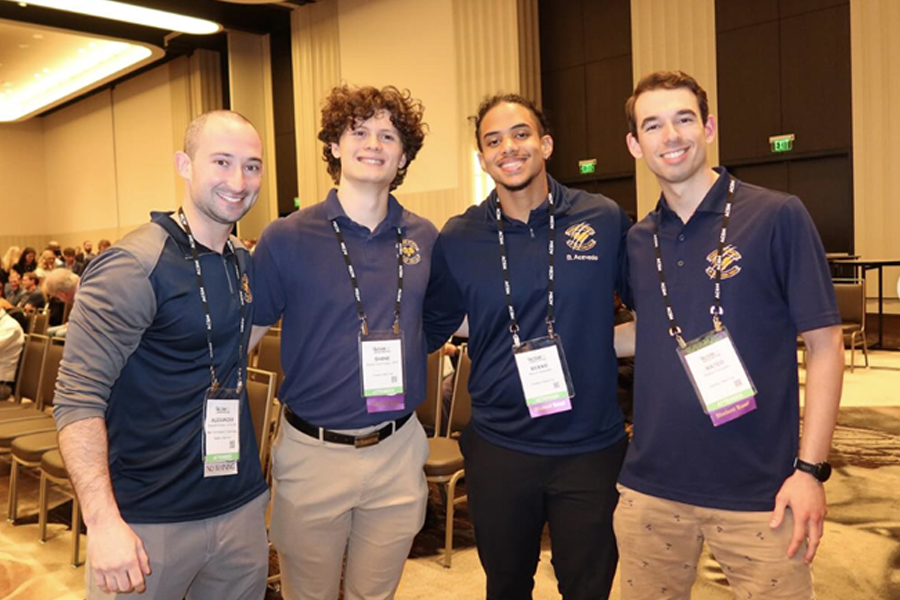
Dedicated to the Pursuit of Knowledge
Students and alumni from the College of Arts and Sciences, School of Health Professions, and College of Osteopathic Medicine shared research findings at impressive industry conferences.
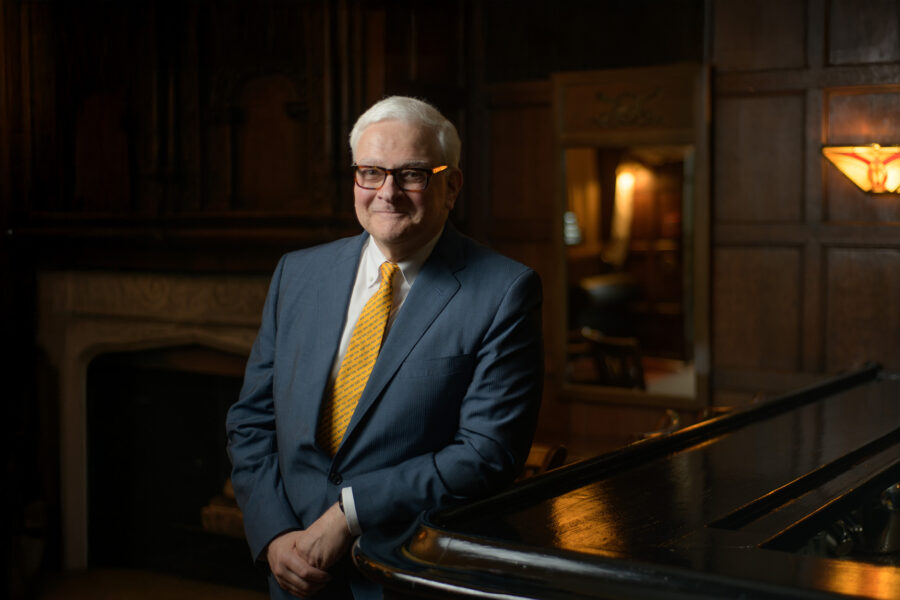
Strength in Leadership
As he prepares to step down as president of New York Tech, we look at Henry C. “Hank” Foley’s legacy of growth, community, and innovation.

Students Learn About Spectrum Technology From Industry Experts
Industry leaders, faculty, students, and staff from universities across the country gathered on the Long Island campus for Spectrum Sizzle, an undergraduate spectrum workshop funded by the National Science Foundation.